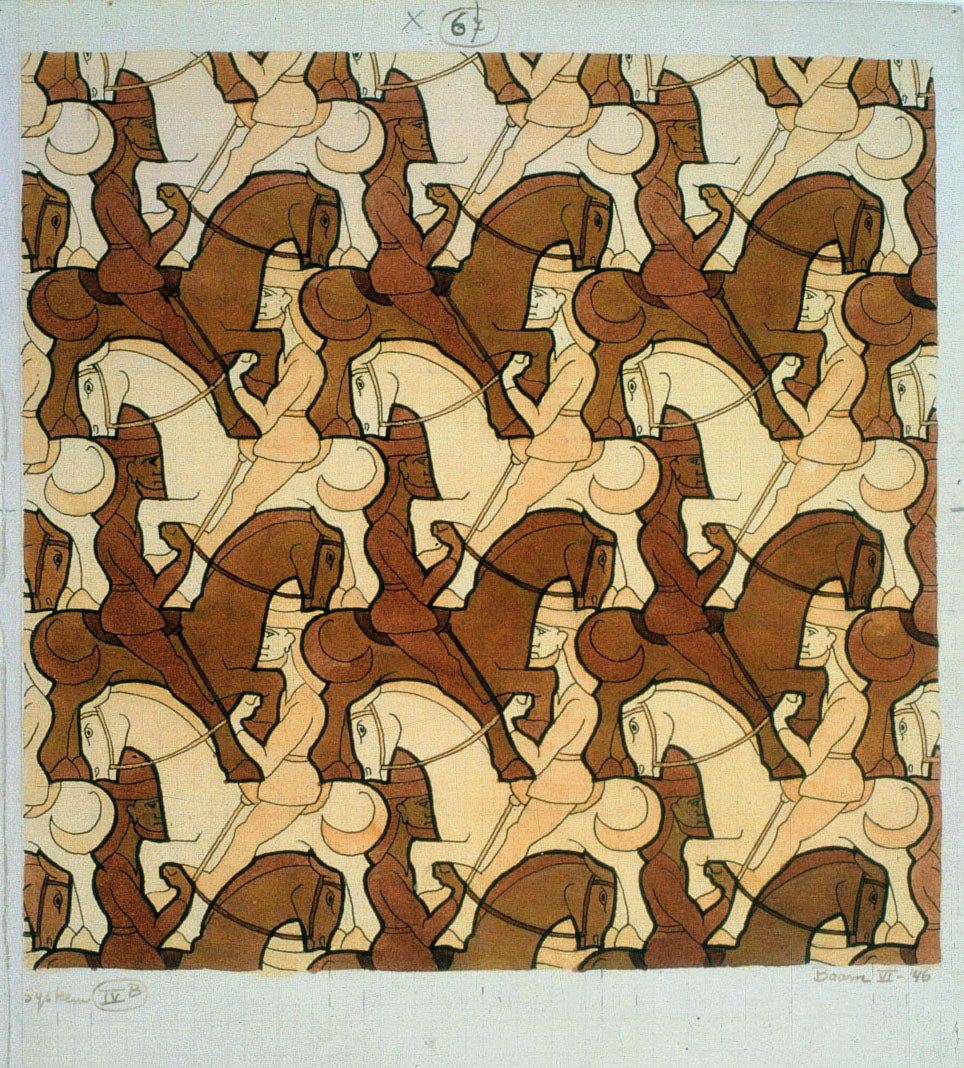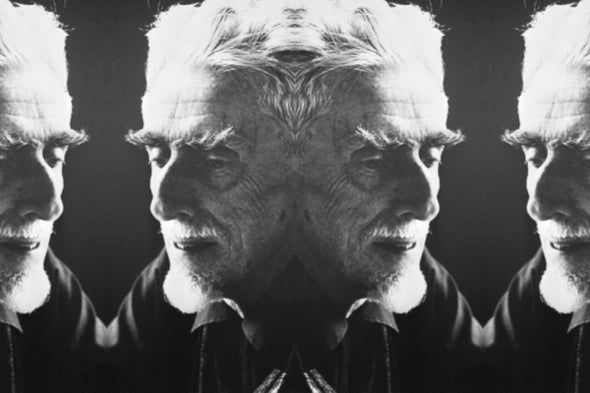Between 1957 and 1986 Martin Gardner wrote the Mathematical Games column for this magazine, with a total of 297 installments. During that time he became the world's most prolific and best-known popularizer of recreational mathematics. His fans still revere him as a kind of sorcerer who conjured up an endless feast of puzzles, games and riddles built on mathematical ideas that often turned on counterintuitive twists. He may have lived as he wrote: after visiting Gardner's office, in the attic of the writer's home, the late mathematician John Horton Conway remarked that “it was filled with puzzles, games, mechanical toys, scientific curiosities, and a host of other intriguing objects, exactly like a wizard's den.”
In his April 1961 column, Gardner introduced U.S. audiences to Dutch artist M. C. Escher, a meticulous craftsman who took great delight in defying expectations and breaking rules. He created mind-bending worlds where impossible things happen: Animals crawl out of the page, staircases rise to meet themselves and form infinite closed loops where one can climb forever, gravity pulls in multiple directions, and waterfalls cascade into the same pools that produced them.
Gardner's column was not directly about Escher. It was a rave review of Introduction to Geometry by University of Toronto geometer H.S.M. Coxeter, which explored areas where older textbooks had feared to tread, such as non-Euclidean geometries. Coxeter had used Escher's works to illustrate the book.
It was a natural pairing: For all of his blatant disregard for convention and authority, Escher embraced the laws of symmetry in geometry. In math-speak, “symmetry groups” refers to the collection of ways one can slide, reflect or rotate an object so that its final appearance is the same as its starting one. Escher often invoked translations, mirror reflections and repetition of forms.

The cover of Scientific American's April 1961 issue shows a flock of flying geese drawn by Escher with half facing to the left and the other half facing right. Closer inspection reveals that the birds are similar—the left-facing half look like, but are not quite, mirror images of the right-facing half. After a few seconds of staring at the picture, a viewer realizes that the birds interlock like puzzle pieces. Mathematicians describe one or more geometric shapes arranged to interlock and completely cover a flat surface as “tiling the plane.” Squares, hexagons and equilateral triangles can do it. Escher's birds can, too, apparently.
Mathematician Doris Schattschneider, the world's foremost expert on symmetry in Escher's works, says that 1961 column likely served to “whet the appetites” of mathematicians and scientists. Five years later Gardner devoted an entire column to Escher's work and included a wide variety of examples.
And that is when things took off. “Escher was overwhelmed” by a deluge of letters from collectors and admirers who wanted to own their own Escher, Schattschneider says. “After Mr. Gardner's article, my customers, especially in America, give me no peace,” Escher wrote to his friend Cornelius Roosevelt, a former cia agent (and grandson of Theodore Roosevelt), who by that time had become the world's foremost collector of all things Escher. Gardner, in the wake of his column, became a kind of Escher broker, redirecting would-be buyers who (through letters to this magazine) requested a print of their own.
The Escher craze had begun, and his popularity exploded in the late 1960s and the 1970s. Escher's work challenged long-held ideas about certainty and truth, coinciding with the countercultural wave of the period. “I cannot help mocking all our unwavering certainties,” he said in 1965. “Are you sure that a floor cannot also be a ceiling? Are you absolutely certain that you go up when you walk up a staircase? Can you be definite that it is impossible to have your cake and eat it?” Escher died in 1972, but his work lives on in large (often pirated) posters on dormitory-room walls and in wildly popular museum exhibitions around the world.
Despite this popularity, the artist never felt at home—or even welcome—in the worlds of math and art. The art world often seemed hostile to his work, and Escher once said he was “embarrassed” by the term “artist.” In a review of a 1998 retrospective, a New York Times art critic dismissed Escher as the “nonartist's nonartist.”
“I'm starting to speak a language which is understood by very few people. It makes me feel increasingly lonely,” he wrote to his son George in 1959, two years before Gardner's first column. “Mathematicians may be friendly and interested and give me a fatherly pat on the back, but in the end I am only a bungler to them. ‘Artistic' people mainly become irritated.”
But in the playful world of Gardner's Mathematical Games, Escher had found a home. “I think your article is excellent indeed,” he wrote to Gardner after seeing a 1966 column. Today he would likely recognize his community as the growing group of artists who find aesthetic inspiration in mathematical ideas.
One key attribute Escher shares with those artists, as well as with mathematicians and with anyone who finds themselves unable to resist a puzzle, is a certain kind of perseverance. “What can I do,” he once wrote to his son Arthur, “when this sort of problem fascinates me so much that I cannot leave it alone?”


